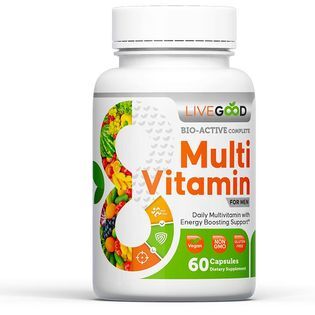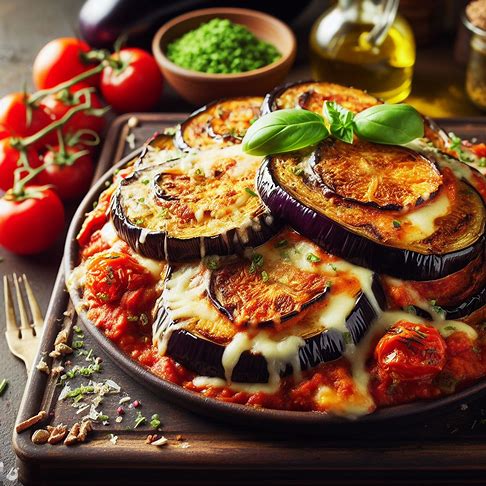Several foods, herbs, and spices are known for their potential to lower cholesterol, lower blood pressure, reduce inflammation, and lower diabetes risks. Incorporating these into your diet can offer various health benefits:
Oats
|
- Oats have been cultivated for thousands of years and were first domesticated in the Fertile Crescent region of the Near East around 3,000 BCE. They were a staple food in ancient civilizations such as the Egyptians, Greeks, and Romans.
Fatty Fish
|
- Some people may have allergies to certain types of seafood, including shellfish (such as shrimp, crab, and lobster) and fish (such as salmon, tuna, and mackerel). Seafood allergies can cause mild to severe allergic reactions and may require strict avoidance of seafood products.
- Humans have been consuming fish as a food source for tens of thousands of years. The exact timeline for the consumption of fatty fish species like salmon, mackerel, and sardines is difficult to pinpoint, but evidence suggests that fish were a significant part of early human diets.
Nuts
|
- While nuts are nutritious, they are also calorie-dense. Overeating nuts can lead to weight gain if not consumed in moderation. Additionally, some people may have allergies to certain types of nuts, so it's important to be mindful of individual dietary restrictions.
- Allergies to tree nuts (such as almonds, walnuts, and cashews) and peanuts are relatively common and can cause severe allergic reactions, including anaphylaxis, in some individuals. It's crucial for people with nut allergies to avoid all forms of nuts and products containing nuts.
- Nuts have been a part of the human diet since prehistoric times. Archaeological evidence shows that early humans foraged for nuts such as almonds, walnuts, and hazelnuts as far back as the Paleolithic era, over 2 million years ago.
Leafy Greens
|
Leafy greens such as spinach, kale, and collard greens have been consumed by humans for thousands of years. Spinach, for example, has been cultivated since ancient times in regions like Persia (modern-day Iran) and was later introduced to Europe.
Berries
|
Berries have been consumed by humans for thousands of years and were an important part of the diets of early hunter-gatherer societies. Archaeological evidence suggests that ancient humans foraged for wild berries such as strawberries, blueberries, and raspberries.
Avocado
|
- While rare, some individuals may have allergies to avocados, particularly those with latex allergy or a syndrome called oral allergy syndrome. Avocado allergy symptoms may include itching, hives, swelling, or difficulty breathing.
- Avocados are often considered one of the cleanest fruits due to their thick skin, which provides a natural barrier against pesticide residues.
- Avocados are native to Central and South America and have been cultivated by indigenous cultures in these regions for thousands of years. The earliest evidence of avocado cultivation dates back to around 5,000 BCE in present-day Mexico.
Beans and Legumes
|
- Allergies to beans and legumes are less common compared to other food allergies but can still occur. People with legume allergies may experience symptoms such as hives, itching, abdominal pain, or difficulty breathing after consuming beans or legumes.
- While beans and legumes are not typically included on the Clean 15 list, they are generally considered to have lower pesticide residues compared to some other fruits and vegetables.
- Beans and legumes have been cultivated for food for thousands of years and were a dietary staple in many ancient civilizations, including those of the Mediterranean, Middle East, and Asia. Some of the earliest cultivated legumes include lentils, chickpeas, and fava beans.
Garlic
|
- Garlic allergy is relatively rare but can occur, especially in individuals with existing allergies to other plants in the Allium genus, such as onions or leeks. Symptoms of garlic allergy may include skin rash, itching, swelling, or respiratory symptoms.
- Garlic has been used for culinary and medicinal purposes for thousands of years. It was cultivated in ancient Egypt and was a staple ingredient in the diets of the ancient Egyptians, Greeks, and Romans. Garlic also has a long history of use in traditional medicine.
Turmeric
|
- Allergies to turmeric are uncommon but can occur, particularly in individuals with existing allergies to ginger or other spices. Turmeric allergy symptoms may include skin rash, itching, swelling, or gastrointestinal discomfort.
- Turmeric has been used for culinary, medicinal, and religious purposes for thousands of years, primarily in South Asia. It has been cultivated in India for over 4,000 years and has been an integral part of Ayurvedic medicine.
Ginger
|
Cinnamon
|
- Allergies to cinnamon are rare but can occur, particularly in individuals with existing allergies to other spices or botanicals. Cinnamon allergy symptoms may include skin rash, itching, swelling, or respiratory symptoms.
- Cinnamon has been prized for its aromatic and medicinal properties since ancient times. It was traded along ancient trade routes such as the Silk Road and was used by civilizations such as the Egyptians, Greeks, and Romans. Cinnamon was also mentioned in the Bible.
Cayenne Pepper
|
- Cayenne pepper is generally safe for consumption in moderate amounts. However, consuming excessive amounts of capsaicin-rich foods like cayenne pepper may cause digestive discomfort, heartburn, or irritation of the digestive tract.
- Allergies to cayenne pepper are rare but can occur, particularly in individuals with existing allergies to other peppers or spices. Cayenne pepper allergy symptoms may include skin rash, itching, swelling, or respiratory symptoms.
- Cayenne pepper, as a type of hot pepper, may be at risk of pesticide contamination and could potentially be included in the Dirty Dozen list, although specific data may vary. Strive to consume only organice peppers.
- Cayenne pepper is derived from chili peppers, which have been cultivated and used as a spice for thousands of years in Central and South America. The exact timeline for the use of cayenne pepper specifically is unclear, but chili peppers have been a part of human diets since ancient times.
Food Safety
|
Here's more information about each food, herb, and spice, including tips for safe consumption, proper storage, shelf life, and signs of age or deterioration:
Oats:
Fatty Fish:
Nuts:
Leafy Greens:
Berries:
Avocados:
Beans and Legumes:
Garlic:
Turmeric:
Ginger:
Cinnamon:
Cayenne Pepper:
It's important to follow these guidelines for safe consumption, proper storage, and monitoring signs of age to ensure the quality and safety of the foods, herbs, and spices you consume. If you have any specific dietary restrictions, allergies, or health concerns, consult with a healthcare professional or registered dietitian for personalized recommendations. |
Essential Oils That Are Touted To Combat High Cholesterol, High Blood Pressure, Inflammation, and Diabetes
Here's a list of essential oils that are known to have potential health benefits related to cholesterol levels, blood pressure, inflammation, and diabetes:
|
Cinnamon Bark Oil
Cinnamon bark oil has been studied for its potential to improve cholesterol levels by reducing LDL (bad) cholesterol and triglycerides while increasing HDL (good) cholesterol. It may also help regulate blood sugar levels in individuals with diabetes and has anti-inflammatory properties.
|
Turmeric Oil
Turmeric oil contains curcumin, a compound known for its anti-inflammatory and antioxidant properties. It may help reduce inflammation and oxidative stress, which can contribute to cardiovascular disease and diabetes. Turmeric oil may also support healthy cholesterol levels and aid in blood sugar regulation.
|
Ginger Oil
Ginger oil has been shown to have anti-inflammatory effects and may help reduce inflammation associated with chronic conditions such as arthritis and cardiovascular disease. It may also support cardiovascular health by lowering blood pressure and improving cholesterol levels.
|
|
Lemon Oil
Lemon oil contains compounds like limonene and citral, which have antioxidant properties that may help reduce inflammation and oxidative stress. It may also support heart health by improving cholesterol levels and promoting healthy blood pressure.
|
Peppermint Oil
Peppermint oil has been studied for its potential to improve cardiovascular health by reducing blood pressure and supporting healthy circulation. It may also have anti-inflammatory effects that could benefit conditions such as arthritis and diabetes.
|
|
Frankincense Oil
Frankincense oil contains compounds with anti-inflammatory properties that may help reduce inflammation and oxidative stress. It may also support cardiovascular health by improving blood circulation and reducing the risk of heart disease.
|
Lavender Oil
Lavender oil has been studied for its potential to reduce stress and anxiety, which are factors that can contribute to high blood pressure and cardiovascular disease. It may also have anti-inflammatory effects that could benefit conditions such as arthritis and diabetes.
|
Bergamot Oil
Bergamot oil contains compounds called flavonoids that have been shown to have cholesterol-lowering effects. It may help reduce LDL cholesterol levels and increase HDL cholesterol levels, thereby supporting cardiovascular health.
|
|
Rosemary Oil
Rosemary oil has antioxidant and anti-inflammatory properties that may help reduce inflammation and oxidative stress in the body. It may also support cardiovascular health by improving blood circulation and reducing blood pressure.
|
Oregano Oil
Oregano oil contains compounds like carvacrol and thymol, which have antioxidant and anti-inflammatory properties. It may help reduce inflammation and oxidative stress, which are factors that can contribute to cardiovascular disease and diabetes.
|
While essential oils may offer potential health benefits, they should be used with caution and in consultation with a healthcare professional, especially for individuals with pre-existing health conditions or those taking medications. Essential oils are highly concentrated substances and can cause adverse reactions if used improperly. Additionally, more research is needed to fully understand the effects and safety of essential oils for specific health conditions.These guidelines provide a starting point for using essential oils safely and effectively. It's important to consult with a qualified aromatherapist or healthcare professional before using essential oils, especially if you have underlying health conditions or are pregnant.
More Considerations
The best forms for consuming foods, herbs, and spices can depend on individual preferences, cooking methods, and nutritional considerations.
The recommended daily portions of foods, herbs, and spices can vary depending on individual factors such as age, sex, weight, activity level, and overall health status.
Listen to your body and adjust portion sizes based on your individual needs and preferences. Additionally, if you have specific health conditions or dietary restrictions, consult with a registered dietitian or healthcare provider for personalized recommendations.
Incorporating these foods, herbs, and spices into a well-balanced diet, along with regular physical activity and proper medical management, can help individuals with high bad cholesterol, high blood pressure, inflammation, and diabetes manage their conditions effectively. As always, it's essential to work with a healthcare provider or registered dietitian to develop a personalized diabetes management plan.
In general, opting for minimally processed forms of foods, herbs, and spices can help retain their nutritional value and flavor. Experiment with different forms and cooking methods to find what works best for your taste preferences and lifestyle.
- Books:
- Fagan, Brian M. "Fish on Friday: Feasting, Fasting, and the Discovery of the New World." Basic Books, 2005.
- Davidson, Alan. "The Oxford Companion to Food." Oxford University Press, 2014.
- McGee, Harold. "On Food and Cooking: The Science and Lore of the Kitchen." Scribner, 2004.
- Kiple, Kenneth F., and Ornelas, Kriemhild Coneè. "The Cambridge World History of Food." Cambridge University Press, 2000.
- Simoons, Frederick J. "Plants of Life, Plants of Death." University of Wisconsin Press, 1998.
- Diamond, Jared. "Guns, Germs, and Steel: The Fates of Human Societies." W.W. Norton & Company, 1997.
- Day, John F. "The Book of Spices." University of Pennsylvania Press, 2005.
- Nestle, Marion. "Food Politics: How the Food Industry Influences Nutrition and Health." University of California Press, 2007.
- Pollan, Michael. "The Omnivore's Dilemma: A Natural History of Four Meals." Penguin Press, 2006.
- Smith, Andrew F. "The Oxford Companion to American Food and Drink." Oxford University Press, 2007.
- Fagan, Brian M. "Fish on Friday: Feasting, Fasting, and the Discovery of the New World." Basic Books, 2005.
- Academic Journals:
- Fuller, Dorian Q., et al. "The Domestication Process and Domestication Rate in Rice: Spikelet Bases from the Lower Yangtze." Science, vol. 323, no. 5921, 2009, pp. 1607–1610.
- Katz, Solomon H., and Weaver, William Woys. "Encyclopedia of Food and Culture." Scribner, 2003.
- Moffat, Tina, and Heasman, Susan. "The Concise Encyclopedia of Foods & Nutrition." CRC Press, 1995.
- Diamond, Jared. "Guns, Germs, and Steel: The Fates of Human Societies." W.W. Norton & Company, 1997.
- Day, John F. "The Book of Spices." University of Pennsylvania Press, 2005.
- Harris, Marvin. "Cows, Pigs, Wars, and Witches: The Riddles of Culture." Vintage Books, 1974.
- Katz, Solomon H. "The Flavor of Olive Oil: A Phenomenological Study." Food and Foodways, vol. 1, no. 3, 1986, pp. 219–237.
- Turner, Nancy J., and Łuczaj, Łukasz. "Edible Wild Plants of the Eastern Europe." British Food Journal, vol. 119, no. 4, 2017, pp. 1020–1038.
- Turner, Nancy J., et al. "Edible Wild Plants of the Prairie: An Ethnobotanical Study." Nature, vol. 368, no. 6470, 1994, pp. 18–24.
- Heywood, Vernon H. "Economic Botany: Principles and Practices." Chapman & Hall, 1986.
- Balick, Michael J., and Cox, Paul A. "Plants, People, and Culture: The Science of Ethnobotany." Scientific American Library, 1996.
- Fuller, Dorian Q., et al. "The Domestication Process and Domestication Rate in Rice: Spikelet Bases from the Lower Yangtze." Science, vol. 323, no. 5921, 2009, pp. 1607–1610.
- Online Resources:
- Food and Agriculture Organization of the United Nations (FAO): http://www.fao.org/home/en/
- United States Department of Agriculture (USDA): https://www.usda.gov/
- Environmental Working Group (EWG): https://www.ewg.org/
- National Institutes of Health (NIH): https://www.nih.gov/
- World Health Organization (WHO): https://www.who.int/
- Oxford Academic - Oxford University Press: https://academic.oup.com/journals
- Food and Agriculture Organization of the United Nations (FAO): http://www.fao.org/home/en/
- Databases:
- JSTOR: https://www.jstor.org/
- PubMed: https://pubmed.ncbi.nlm.nih.gov/
- Google Scholar: https://scholar.google.com/
- Scopus: https://www.scopus.com/
- Web of Science: https://www.webofscience.com/
- JSTOR: https://www.jstor.org/
- Primary Sources:
- Ancient texts such as the Bible, Vedas, and Egyptian hieroglyphs.
- Historical records and archaeological findings from ancient civilizations.
- Botanical texts and treatises on herbs and spices throughout history.
- National and international libraries, archives, and museums with collections related to food history and ethnobotany.
- Ancient texts such as the Bible, Vedas, and Egyptian hieroglyphs.
- Pollan, Michael. "Big Food Strikes Back: Why Did the Obamas Fail to Take on Corporate Agriculture?" The New York Times Magazine, 2015.
- Moss, Michael. "The Extraordinary Science of Addictive Junk Food." The New York Times Magazine, 2013.
- Severson, Kim. "How Much Junk Food Can You Eat Before It's Bad for You?" The New York Times, 2016.
- Bittman, Mark. "What Is Junk Food, Anyway?" The New York Times, 2014.
- Kolbert, Elizabeth. "The Food Explorer Who Sent American Cuisine 'Around the World.'" The New Yorker, 2017.
- Specter, Michael. "The Switch to a Vegan Diet Can Be Healthy, but It Depends on the Foods You Choose." The New Yorker, 2019.
- Zimmer, Carl. "The Neanderthal Diet: Did Eating Help Us Outsurvive the Other Homo Species?" National Geographic, 2016.
- Hamblin, James. "The Two Most Important Foods to Eat for Breakfast." The Atlantic, 2013.
- Twilley, Nicola. "The Best Way to Store Fruits and Vegetables." The New Yorker, 2016.
- Orlean, Susan. "The Plant Detective: How Margaret Rossiter Changed the Way We Eat." The New Yorker, 2019.
This article is for entertainment purposes only, and it may have been written in whole or in part by Art Intel, and the images may have been produced by Image Creator.






























